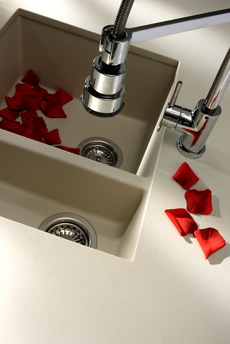
If you want to add value to your home and increase its resale value,
then you can't go wrong with stone flooring.
Stone is beautiful, practical and it conveys a sense of quality and
tradition. When it comes to flooring, you have three basic options in stone:
There are a few considerations, however, before you take the plunge
with this form of flooring. Stone flooring is generally more expensive than
other types. Because it is quarried, each piece is unique. That's a positive
attribute but it also means that you cannot be 100% in control of the overall
look.
Not only does the surface of stone vary in appearance, texture and
hardness, it also needs to be matched with the kind of activity that it will be
hosting. A smooth surface like marble, for example, may be less useful in an
area where there is water spillage like in the bathroom where there is the
potential to slip . In a high-traffic
kitchen, you may want to consider a less-expensive option – stone tiles.
Granite Has Many Uses
Granite has a
huge appeal for not only kitchen flooring but also for bathroom vanities,
countertops, backsplashes and hearths. It is quarried all over the world, and
has a wildly diverse degree of coloration. ‘Niagara Gold Granite', which is – surprisingly given its name – quarried
in Africa. Niagara Gold includes colours ranging from dark brown to black right
through to peach and light rose. Its veining and colour varies
considerably, and it is ideal for both interior and exterior use. And that is
just one of the many colour options available in granite.
The Care and Treatment of
Granite
If you are going to go to the expense of
installing granite in your
home, then it shouldn't be a surprise to know that there are certain cleaning requirements.
Again – keep in mind the end game: not only are you creating a beautiful,
utilitarian environment for your present day use, but you are adding resale
value to your most important asset. Cleaning should be gentle; there are stone
cleaners but they should not contain abrasives, which might cause scratches to
the stone's surface. A granite floor or counter needs to be resealed every one
to two years.
And there are other practical steps. Avoid getting sand, grit and dirt
on stone surfaces, because they are abrasives. If the stone is in a high
traffic area, mats or rugs placed in the areas before the stone begins will
collect those abrasives before they make it to your floor. Again, watch the
abrasives in your cleaning products.
Make sure you have sealed the floor in such a way as to avoid water
seeping under the flooring. The kitchen can be the home of domestic accidents –
things get spilled and granite, like any other surface, should be cleaned
quickly.
Resale value may not be the first thing you think about when you
upgrade your kitchen floors. But whether you are using tiles or
sheets of stone, the effect will be
dramatic – both visually and economically.